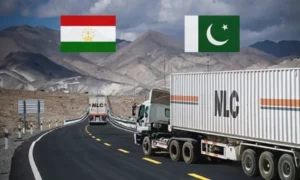The announcement of the Federal Budget for 2024-2025 is the most significant development in recent days, on the economic landscape of country. Important to note here is the budget’s balanced and anti-inflationary nature. In a milieu dominated by budgetary constraints and International Monetary Fund’s (IMF) impending expectations, the Government has been able to craft a financial strategy that is likely to foster economic development without imposing significant new taxes.
No New Taxes: A Relieved Economy
One of the most prominent parts of the budget is the decision, not to levy any significant new taxes. This measure not only benefits the general public and companies, but also indicates a commitment to economic stability. The Government has demonstrated its support for both high-margin investors and low-margin businesses like as oil marketing companies (OMCs), chemicals, and steel by maintaining stable tax rates, notably dividend income and the minimum turnover tax. This decision stands in stark contrast to popular expectations that changes in the classification of income from capital gains and dividends would shake up the stock market. The stock market has typically responded positively to the budget, owing mostly to the steadiness of tax policy. A rise by 3700 points in a day, itself is a record in history of Pakistan Stock Exchange. The lack of anticipated dividend tax hikes, as well as the preservation of the minimum turnover tax, are being viewed as beneficial measures for both investors and enterprises. These rulings are likely to boost investor confidence and market activity, helping to drive overall economic development.
Public Sector Development Programme (PSDP)
In a constrained fiscal context, the magnitude of the Public Sector Development Programme (PSDP) is especially remarkable. The allotment indicates a purposeful drive for infrastructure development and social welfare, despite the country’s budgetary constraints. This project remains critical to producing jobs, increasing economic activity, and establishing the framework for long-term growth.
IMF Compulsions and Economic Growth
The Administration has had to walk a fine line between meeting IMF demands and stimulating economic development. The budget appears to have achieved a careful balance between meeting IMF standards and creating an atmosphere that is conducive to development. Prudent revenue creation targets have been established, with an embedded realisation that lofty objectives will need tremendous work and competent management.
Economic Growth Targets
The expected economic growth rate of 3.6% is a positive and reasonable aim, but its realisation is contingent upon several factors. Investor confidence, macroeconomic stability under the new IMF plan, increased foreign inflows, and progress on economic reforms will be crucial. The Government’s goal to boost private-sector investment in agricultural and renewable energy is a positive step towards reducing waste and promoting sustainable practices.
The budget’s emphasis on renewable energy and technological infrastructure is also notable. Concessions on the import of solar panel manufacturing materials, as well as incentives for renewable energy projects, are important measures towards sustainable growth. The funding of Rs 20 billion for digital infrastructure, Rs 11 billion for the Technology Park Development Project in Islamabad, and Rs 8 billion for an IT Park in Karachi demonstrates the Government’s commitment to promoting innovation and technical progress.
Welfare Initiatives
On the social welfare front, the budget has made significant investments, notably through the Benazir Income Support Programme(BISP). The 27% rise in the yearly budget of the BISP to Rs 598.71 billion, as well as the expansion of beneficiaries from 9.3 million to 10 million, indicate a strong commitment to poverty eradication and social security. The launch of a poverty graduation and skills development initiative under BISP reinforces this commitment.
The Kissan Package, which comprises a mark-up and risk-sharing system for farm mechanisation, as well as incentives on feed mill gear imports, intends to enhance agricultural output with Rs 5 billion. Furthermore, the Government’s goal to expand loans for Small and Medium-Sized Enterprises (SMEs) from Rs 540 billion to Rs 1.1 trillion, with an additional Rs 100 billion to be added in the coming fiscal year, demonstrates a strong strategy to assist small and medium-sized firms, which are the backbone of the economy.
Military Budget: Addressing Misconceptions
It remains critical to dispel misunderstandings about the military budget. Military officers’ perks are supported via withdrawals from their pay, not from the public treasury. This is a crucial distinction that is sometimes missed in public conversation. Furthermore, the assistance granted to martyrs’ families is a profound recognition of their final sacrifice for the nation’s security. The Pakistan Army plays a critical role in preserving national security. Their passion and perseverance defend our country, often at considerable personal expense. Recognising and honouring their contribution is not just a sign of respect, but also an essential component of national unity.
Conclusion
To summarise, the Federal Budget 2024-2025 is a strategic, balanced, and forward-looking financial strategy. It avoids the risks of additional taxes, promotes critical industries such as renewable energy and technology, and upholds social welfare promises, all while negotiating the difficult environment of IMF requirements. The stock market’s enthusiastic reaction to the budget, as well as its ambitious but attainable growth forecasts, highlight its ability to propel Pakistan towards a more secure and prosperous future. With proper execution and continued investor confidence, this budget has the potential to serve as the platform for long-term economic development and stability.




